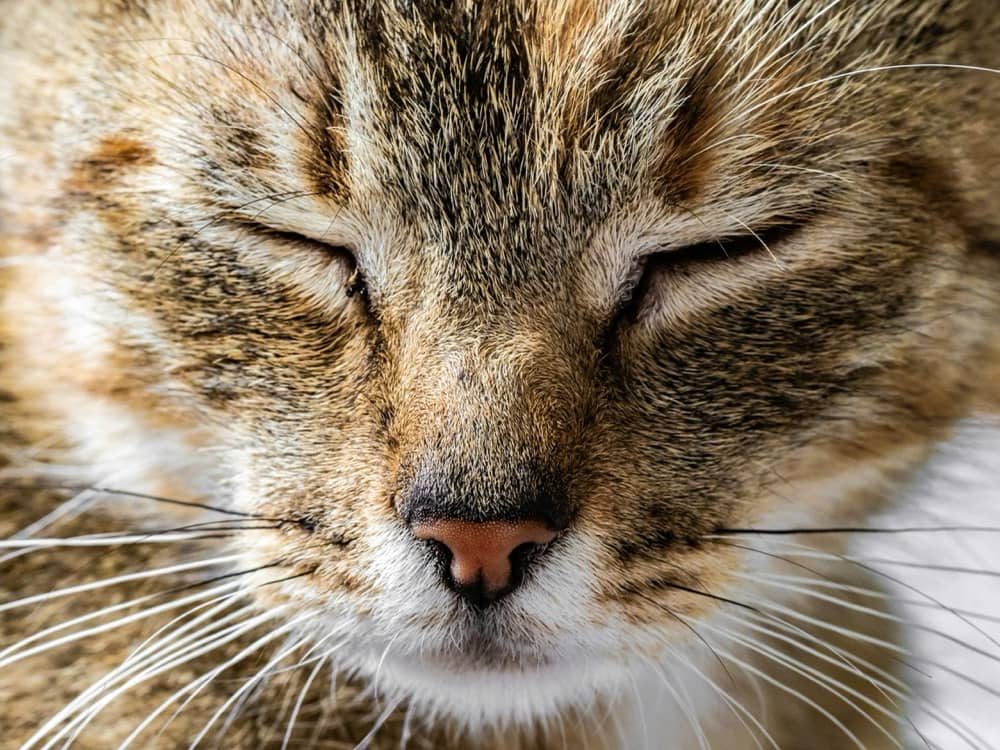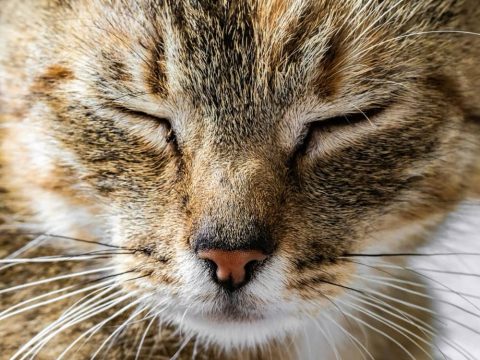Cats are graceful, independent animals, but despite their reputation for resilience, they are not immune to allergies. Just like humans, cats can develop sensitivities to food, environmental triggers, or even insect stings. For pet owners, learning to recognize the signs of allergic reactions is more than just helpful—it can be life-saving. Some allergies are mild and manageable, while others, such as anaphylaxis, demand immediate veterinary attention.
In this comprehensive guide, we’ll cover the most common allergies cats experience, their telltale symptoms, and what steps you can take to keep your feline companion safe and comfortable. By the end, you’ll be better equipped to distinguish between minor irritations and medical emergencies.
Contents
Seasonal and Pollen Allergies in Cats
When spring arrives and flowers bloom, humans often complain about sneezing fits and itchy eyes. Cats can suffer in a similar way. Seasonal allergies—caused by pollen, mold spores, or other airborne triggers—are among the most common issues that affect indoor-outdoor cats, though even strictly indoor cats may show signs.
Sneezing and Coughing
A cat that sneezes occasionally is no cause for concern. But frequent sneezing, often accompanied by a dry cough, can be linked to pollen or dust allergies. Some cats may show symptoms more prominently when lying by open windows or relaxing on the porch during high-pollen days. Persistent coughing should never be ignored, as it can also mimic more serious respiratory conditions like asthma.
Wheezing and Snoring
Airway inflammation due to seasonal allergies can make breathing more difficult, causing wheezing sounds when your cat exhales. Some cats may also snore more loudly than usual when asleep. While mild snoring may seem harmless, repeated wheezing is a signal to consult a veterinarian. Allergies can worsen asthma or other respiratory illnesses, and a quick check-up ensures your cat is not struggling with something more dangerous.
Red, Watery Eyes
If your cat’s eyes look irritated, red, and constantly watery with clear discharge, allergies could be to blame. Unlike bacterial infections, which often affect one eye, allergic reactions typically cause both eyes to become irritated at the same time. You may notice your cat pawing at their eyes, though many cats tolerate the irritation without complaint. Chronic watery eyes, however, can lead to infections if untreated.
Pawing at the Ear
Cats with allergies may develop fluid buildup or inflammation in their ears. This discomfort leads to scratching, pawing, or frequent head shaking. Left untreated, such irritation often escalates into ear infections requiring prescription medication. While ear mites or yeast infections can cause similar behavior, repeated flare-ups around allergy season point strongly toward environmental triggers.
Food Allergies in Cats
Food allergies are another common issue that can be difficult to pinpoint, as symptoms may resemble those of parasites, infections, or nutritional deficiencies. These allergies typically develop over time, even if your cat has eaten the same food for years. Proteins such as chicken, beef, or fish are frequent culprits.
Frequent Vomiting and Diarrhea
Occasional vomiting from hairballs is normal, but repeated vomiting or diarrhea after meals may signal food intolerance. Unlike environmental allergies, food-related issues often appear consistently, regardless of season or environment. Keeping a diary of your cat’s diet and symptoms can help identify patterns that point to specific ingredients.
Dull Coat
Cats are known for their glossy coats. When allergies interfere with nutrient absorption, their fur may lose its shine and appear rough or brittle. If your cat’s grooming habits remain the same but their coat looks dull, a food allergy could be interfering with skin and coat health.
Patchy Hair Loss
Overgrooming and scratching caused by itchy skin often result in bald spots. These patches are commonly seen around the belly, flanks, or legs. While parasites like fleas can also cause hair loss, food allergies remain one of the leading culprits for chronic patchiness. Your veterinarian can run skin tests or recommend an elimination diet to determine the exact cause.
Dandruff
Persistent flakes of skin are a frustrating sign for cat owners and uncomfortable for the cat. While dandruff may be linked to dry air, obesity, or poor grooming, it often appears in conjunction with food-related sensitivities. If your cat’s dandruff worsens after meals or alongside gastrointestinal issues, a dietary allergy could be responsible.

Severe Allergic Reactions (Anaphylaxis)
Most feline allergies are mild to moderate, but occasionally, cats experience anaphylaxis—a sudden, severe allergic reaction. This life-threatening condition can result from insect stings, snake bites, or exposure to certain medications or foods. Immediate emergency care is crucial.
Swelling of the Face
One of the most recognizable signs of anaphylaxis is sudden swelling of the face, lips, or throat. This swelling can obstruct breathing and should never be ignored. If you notice rapid swelling after a sting or unknown ingestion, seek veterinary care immediately.
Rapid Heart Rate
Alongside facial swelling, cats experiencing anaphylaxis often develop a dangerously high heart rate. They may appear restless, distressed, or lethargic. Difficulty breathing or collapse may follow if emergency care is delayed. Only prompt medical attention and proper treatment can save your cat in such situations.
Managing Cat Allergies at Home
While severe allergic reactions always require veterinary intervention, many milder cases can be managed at home with professional guidance. Here are a few strategies:
- Environmental control: Keep windows closed during peak pollen season and use air purifiers indoors. Regular vacuuming helps reduce dust and allergens.
- Dietary changes: If a food allergy is suspected, your vet may recommend an elimination diet to identify the trigger ingredient. Specialized hypoallergenic diets are often effective.
- Topical and oral treatments: Medicated shampoos, antihistamines, or prescribed steroids can relieve itching and inflammation. Always follow veterinary instructions—never give human medications to cats.
- Preventive care: Keeping your cat flea-free is essential, as flea bites are another common allergy trigger that can worsen existing sensitivities.
When to Call the Vet
It’s important to know when home management isn’t enough. Contact your veterinarian if:
- Symptoms appear suddenly and severely.
- Your cat shows swelling of the face or difficulty breathing.
- Vomiting and diarrhea persist beyond 24 hours.
- Hair loss, dull coat, or dandruff worsens despite dietary changes.
- Wheezing or coughing interferes with normal breathing.
Early diagnosis not only improves your cat’s comfort but also prevents long-term health issues.
Final Thoughts
Allergies in cats range from mild seasonal sniffles to severe, life-threatening emergencies. By learning how to recognize the different signs—sneezing, coughing, skin irritation, digestive issues, or anaphylaxis—you’ll be better prepared to protect your cat. While some symptoms can be managed with environmental adjustments or dietary changes, others demand immediate veterinary attention.
Remember: cats are masters at hiding discomfort. If you suspect allergies, don’t wait until symptoms become severe. Schedule a check-up with your vet to discuss testing, treatment options, and preventive strategies. Your attentiveness and quick response can make all the difference in keeping your feline friend safe, happy, and healthy year-round.







